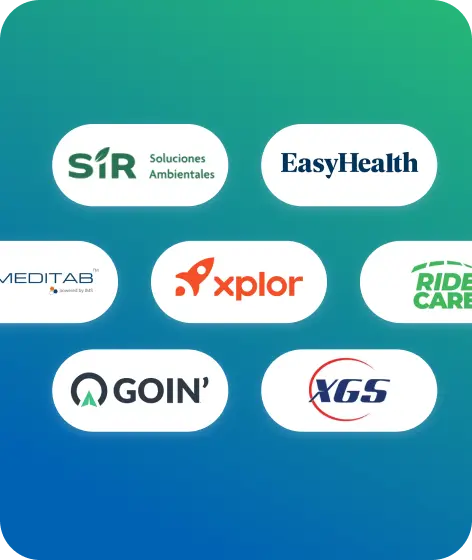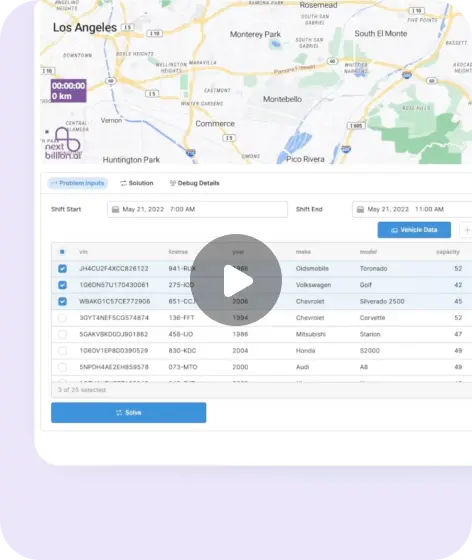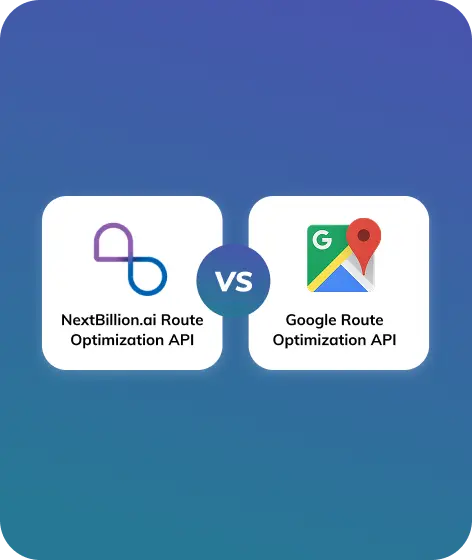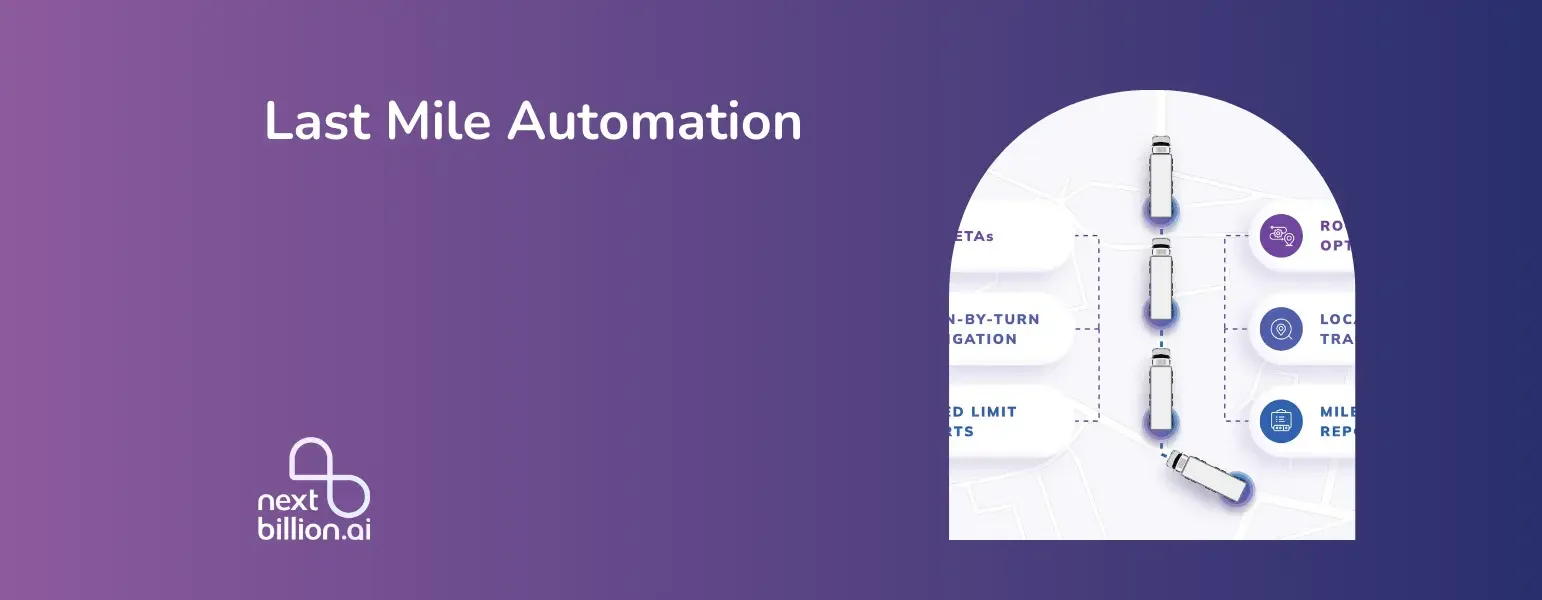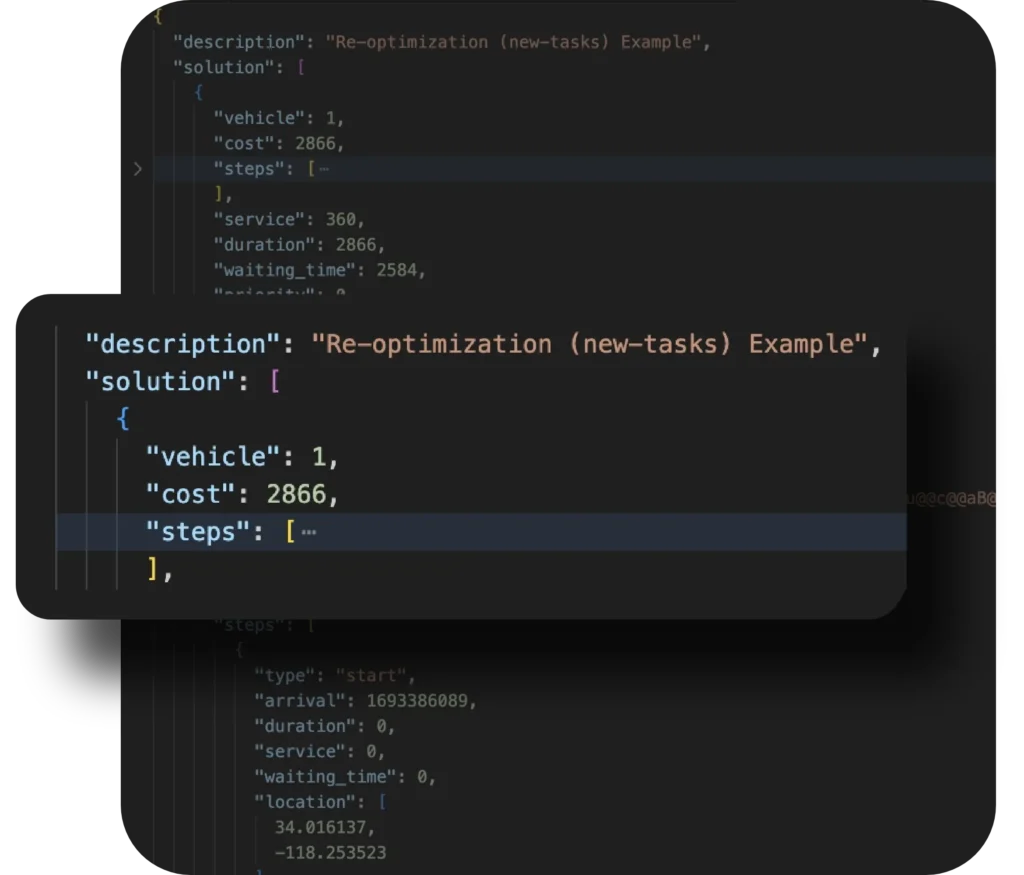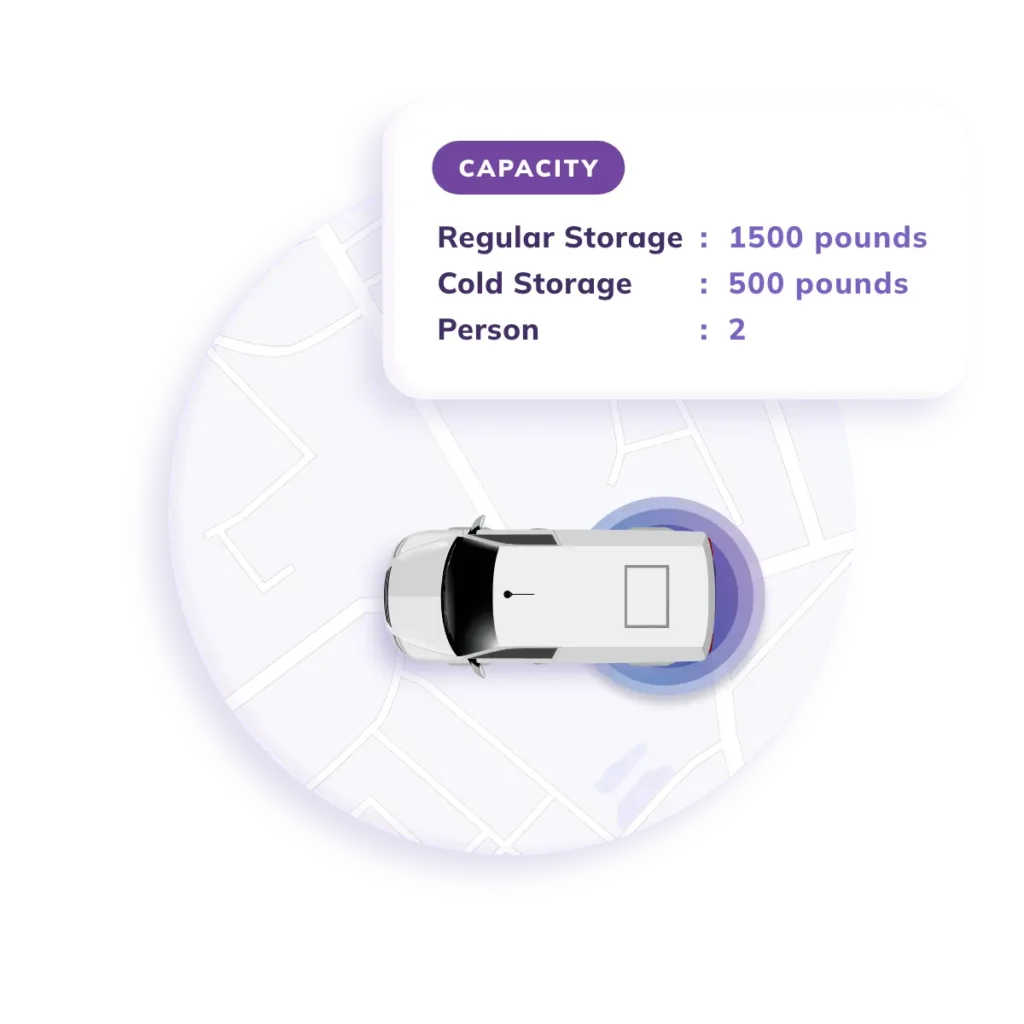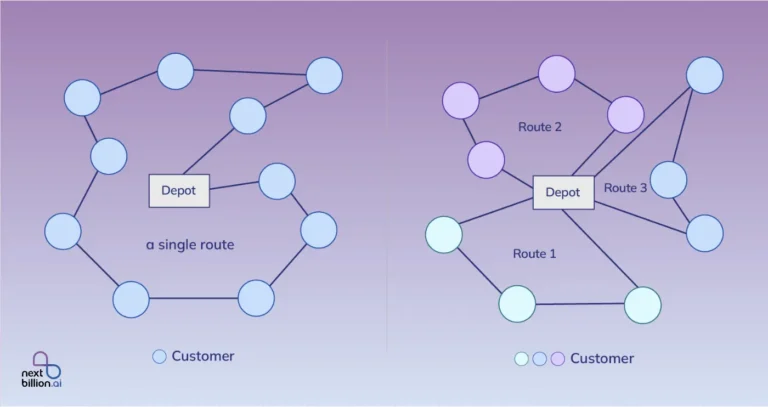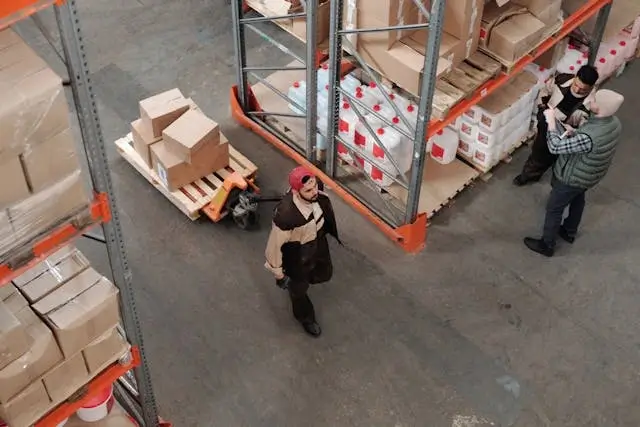
Table of Contents
Why Last Mile Automation is Crucial for Logistics and Delivery Businesses
The complexities of routing in the final leg of delivery are universal, be it traffic congestion, road closures, fluctuating delivery windows or specific customer preferences. Every company — whether in retail, logistics, e-commerce, food delivery or healthcare — faces these challenges. Last mile automation, particularly through route optimization, addresses these complexities by leveraging advanced algorithms and real-time data. This enhances delivery performance, reduces costs, and improves customer satisfaction.
Let’s explore the broader landscape of last mile automation and how it helps various industries overcome these hurdles.
What Is Last Mile Automation?
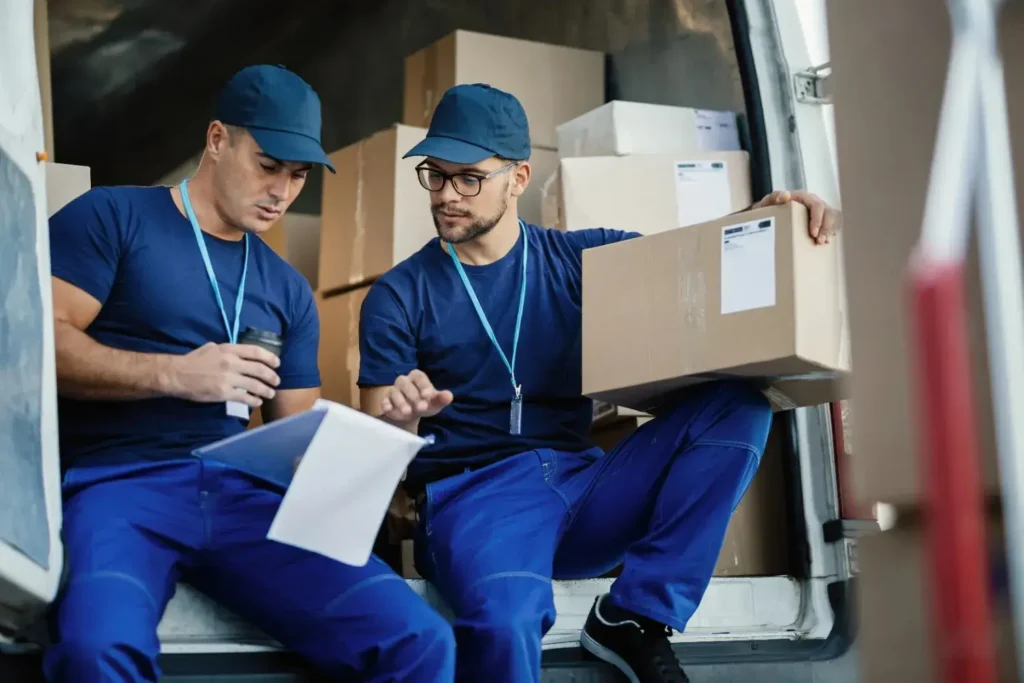
Last mile automation refers to the application of technology to streamline delivery processes in the final stage of the supply chain. This can involve various tools and techniques, including:
Route optimization software: Utilizes algorithms to create the most efficient delivery routes, considering factors like traffic patterns, distance, delivery windows and vehicle types.
Dynamic re-routing: It allows for real-time adjustments to delivery routes based on unforeseen circumstances like traffic jams, accidents, or order cancellations.
Autonomous delivery vehicles: Driverless vehicles such as drones or self-driving cars are emerging technologies that hold promise for last mile delivery.
Warehouse automation: Automating tasks like picking, packing, and sorting goods can significantly expedite the first stages of the delivery process, impacting the last mile.
Delivery management platforms: Integrates various aspects of the delivery process, from route planning and order tracking to customer communications and performance analytics.
Real-time tracking and notifications: This feature keeps dispatchers and customers informed about the status of their deliveries, providing accurate estimated times of arrival (ETAs) and updates on any delays.
Why Logistics and Delivery Companies Should Automate Last Mile Delivery Operations
Logistics and delivery companies face numerous challenges in managing last mile operations. These include traffic congestion, varied delivery windows, high operational costs, and the need for real-time updates. Automating last mile delivery operations addresses these issues.
Integrating automation into last mile routing offers several key benefits that enhance delivery operations:
Improved Delivery Speed
Automated systems calculate the fastest routes by analyzing real-time traffic data, delivery priorities, and road conditions. This ensures quicker deliveries, reducing delays caused by unforeseen obstacles. As a result, customer satisfaction is boosted due to timely deliveries, and companies can fulfill more orders within the same timeframe, increasing overall productivity and allowing for better resource allocation.
Cost Savings
Automation reduces operational costs by optimizing routes, which minimizes fuel consumption and vehicle wear and tear. Efficient route planning leads to lower fuel expenses and extends the lifespan of delivery vehicles, reducing maintenance costs. Additionally, automation decreases the need for manual route planning, lowering labor costs and improving overall cost-efficiency.
Enhanced Customer Experience
Real-time tracking and timely notifications keep customers informed about their delivery status, providing accurate estimated arrival times (ETAs). This transparency builds trust and reduces uncertainty, enhancing the overall customer experience. By improving communication and reliability, companies can increase customer loyalty and satisfaction.
Increased Scalability
Automated systems are designed to scale easily, accommodating growing delivery volumes without compromising efficiency. This ensures consistent performance during peak periods, such as holidays or sales events, allowing businesses to expand their operations smoothly. The ability to handle increased demand without additional manual intervention supports sustainable business growth.
Reduced Human Error
Automation minimizes manual input in route planning and execution, significantly reducing the chances of errors. This leads to more reliable and efficient delivery operations, with fewer disruptions and delays. By reducing human error, companies can maintain higher service standards and ensure that deliveries are completed accurately and on time.
Better Resource Utilization
Efficient route planning and dynamic reoptimization ensure optimal use of available resources, including vehicles and drivers. This leads to more balanced workloads, preventing driver fatigue and improving fleet productivity. By maximizing resource utilization, companies can reduce operational inefficiencies and enhance overall performance.
Environmental Benefits
Optimized routing reduces fuel consumption and emissions by planning the most efficient routes and minimizing idle time. This contributes to more sustainable delivery operations, supporting environmental sustainability goals. Companies can enhance their reputation as eco-friendly businesses, attracting environmentally conscious customers and complying with regulatory standards.
Handling Reverse Logistics Efficiently
Automating reverse logistics streamlines the return process by optimizing routes for pickups and returns. This reduces the costs associated with handling returns and improves resource utilization. Efficient reverse logistics operations enhance customer satisfaction by providing a smooth and reliable return experience, while also minimizing waste and operational costs.
Providing On-Demand Routing Flexibility
Automation enables dynamic adjustments to delivery schedules, accommodating last-minute changes in delivery times or addresses. This flexibility meets customer expectations for on-demand services and enhances their overall experience. By adapting to real-time changes, companies can maintain high levels of service and customer satisfaction.
Navigating On-Ground Constraints
Automated systems continuously monitor traffic conditions, road closures, and other on-ground challenges, adjusting routes in real time to ensure timely deliveries. This proactive approach prevents delays caused by unforeseen obstacles, maintains delivery schedules and improves reliability. Companies can ensure that their operations remain efficient and responsive to changing conditions.
How Businesses Use NextBillion.ai to Automate Their Last Mile Operations
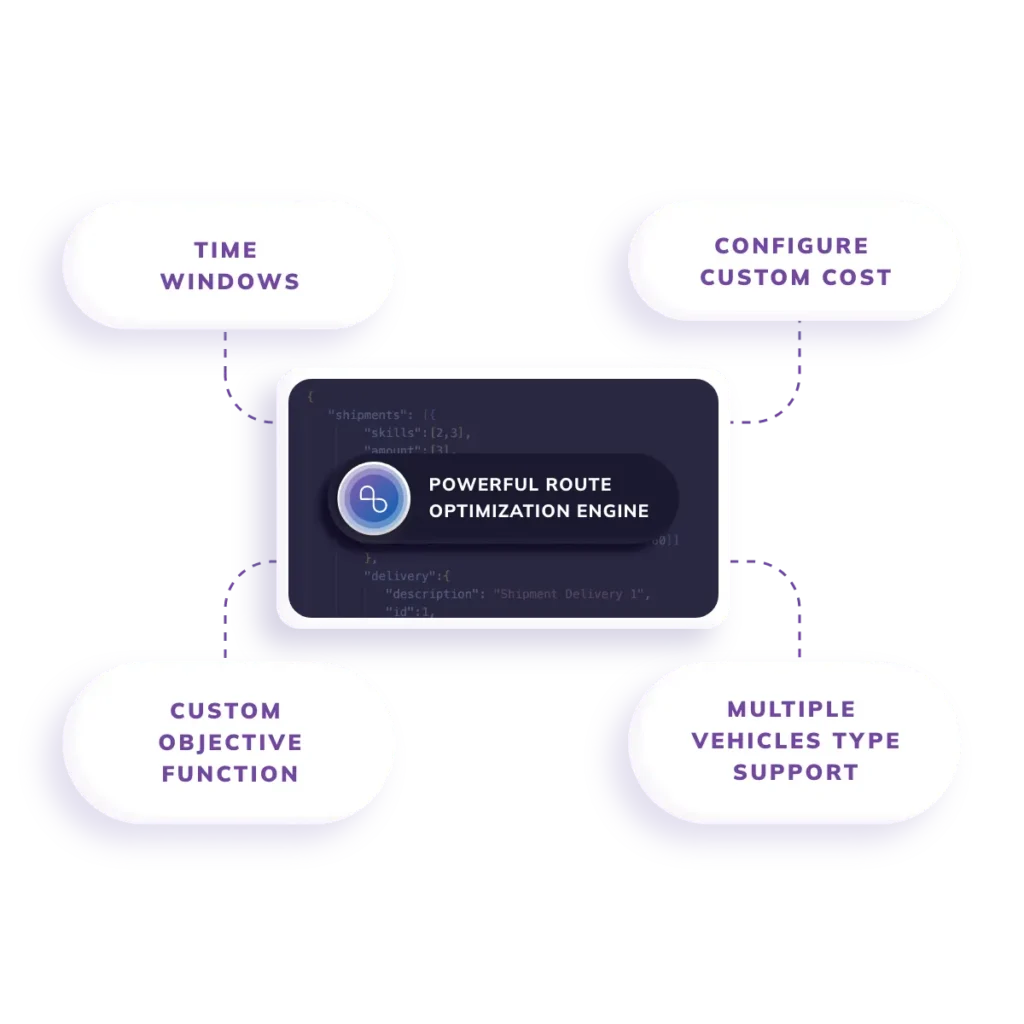
NextBillion.ai provides a comprehensive suite of tools designed to automate and optimize last mile delivery operations. Here’s how businesses can use these solutions:
For Advanced Route Planning
NextBillion.ai’s advanced route planning capabilities enable businesses to generate optimal routes tailored to their specific delivery operations. This includes:
- 50+ hard and soft constraints: Configure routing algorithms with over 50 customizable constraints to meet unique operational needs, ensuring precise and accurate routes.
- Support for multiple vehicle profiles: Customize routes based on vehicle types and capacities to ensure optimal utilization of the fleet.
- Custom cost matrices: Plan cost-effective routes by creating custom cost matrices tailored to individual vehicle profiles, considering factors like fuel consumption and maintenance.
- Custom road permissions and restrictions: Set specific road permissions and restrictions to comply with local regulations and road conditions, enhancing safety and compliance.
- Custom objective functions: Define routing priorities, such as shortest distance, fastest time, or lowest cost, to align routes with operational goals.
- Complex task sequencing: Organize delivery tasks efficiently by considering delivery windows, customer preferences, and task dependencies.
For Dynamic Reoptimization
Dynamic reoptimization allows businesses to have unlimited free reruns within 24 hours without additional costs and update in-progress routes in real time. This feature helps accommodate:
- Ad-hoc Jobs: Seamlessly integrate last-minute delivery requests without disrupting the existing schedule.
- Cancellations and reprioritizations: Adjust routes to account for cancellations or changes in delivery priorities, maintaining service levels.
- Efficiency maintenance: Ensure routes remain optimal despite changes in real-time conditions.
- Latest ETAs as per current traffic: Rerun optimization before each assigned route starts to consider current traffic conditions, providing the most accurate ETAs at no extra charge.
For Accurate Capacity Planning
NextBillion.ai’s capacity planning features enable businesses to accurately predict delivery capacity availability and optimize resource allocation. This involves:
- Running simulations: Test various capacity and mixed-fleet scenarios at no extra cost to determine the most efficient allocation of resources.
- Multidimensional capacities: Define vehicle capacities using multidimensional attributes, ensuring consistency with job and shipment quantities.
- Alternative capacity configurations: Specify alternate capacity configurations for vehicles to handle varying types of loads. This flexibility ensures optimal use of vehicle space and resources.
- Predict delivery capacity: Accurately predict available delivery capacity for upcoming time slots based on current usage. This allows businesses to plan and schedule deliveries more effectively, avoiding overbooking and underutilization.
For Intelligent Clustering and Zoning
NextBillion.ai’s intelligent clustering and zoning capabilities, a key component of last mile automation, enable businesses to optimize delivery efficiency and accuracy. Key features include:
- Driving distances and traffic patterns: Minimizing travel time and fuel consumption by optimizing job clusters based on real-time traffic conditions and driving distances.
- Drivers’ location preferences: Assigning jobs based on driver familiarity with specific areas, increasing efficiency and reducing delivery times.
- Allowed zones for vehicles: Specifying zones where vehicles are permitted to fulfill tasks, ensuring that vehicles only operate within designated areas.
- Restricted zones for vehicles: Defining zones where vehicles are restricted from fulfilling tasks, although they may still travel through these areas.
- Bundling orders: Utilizing the Clustering API to bundle orders or jobs based on user-defined constraints. This minimizes the total distance or duration required to service each cluster from a central location.
For Live Tracking and Delivery Alerts
NextBillion.ai offers comprehensive live tracking and delivery alerts as part of its last mile automation solutions, enhancing the management and monitoring of delivery operations. Key features include:
- Real-time monitoring: Utilize the Live Tracking API to monitor the location, status and activity of various assets, including vehicles, users, and drivers in real time.
- Customer notifications: Provide customers with accurate ETAs and updates on their delivery status.
- Geofence-based alerts: Implement the Geofence API to establish custom geographical boundaries. Receive alerts when assets enter or exit these geofences, preventing missed deliveries and enhancing operational control.
- Create and manage assets: Track individual assets and manage their lifecycle, ensuring that all assets are accounted for and monitored accurately.
- Create alerts based on asset activity: Define custom alerts based on specific asset activities. These alerts can be used to notify managers of important events, such as delays, deviations from the planned route, or unauthorized stops.
Why Choose NextBillion.ai
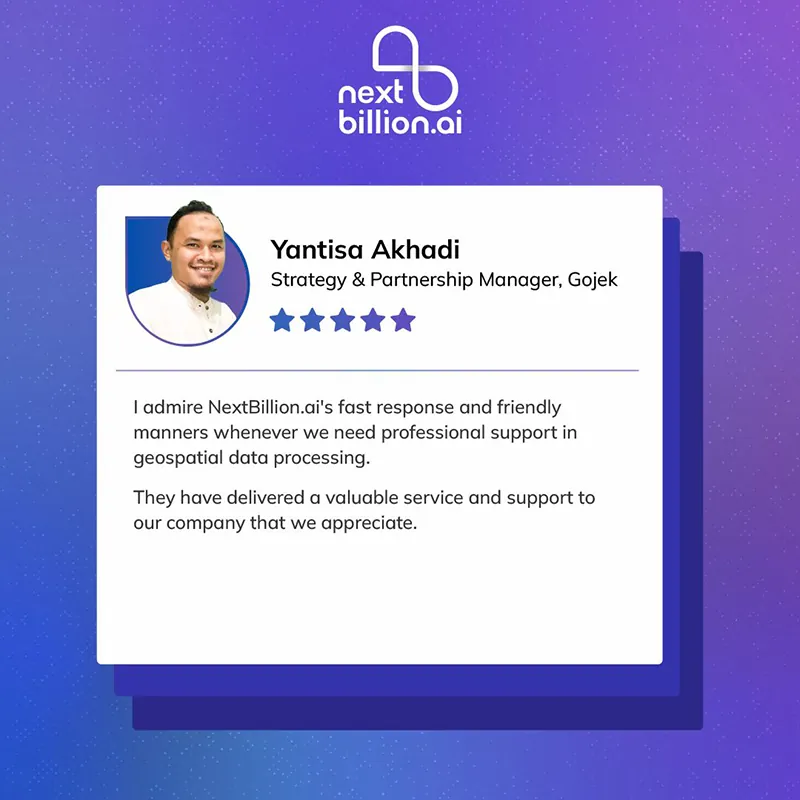
Beyond offering a comprehensive last-mile automation suite, NextBillion.ai sets itself apart with several key advantages:
End-to-End Building Blocks for Last-Mile Delivery
NextBillion.ai’s solutions cover all aspects of last mile delivery, from route planning to live tracking and customer notifications.
Flexible Pricing
Our pricing adapts to your business growth, unlike rigid per-call models, offering flexibility based on orders, assets, or API usage.
Seamless Integration
Integrate NextBillion.ai’s tools with top enterprise clouds, ERPs, and CRMs, ensuring smooth and efficient operations across your existing systems.
Hands-On Support
Benefit from hands-on support from technical and solution engineers, guiding you from evaluation to production and ensuring successful implementation.
Last mile automation is a game-changer for logistics and delivery companies. By integrating advanced technologies and automation tools, businesses can significantly enhance their delivery operations, reduce costs, and improve customer satisfaction. NextBillion.ai provides the comprehensive solutions needed to overcome last mile challenges and achieve optimal efficiency in delivery operations. Embrace last mile automation with NextBillion.ai and stay ahead in the competitive landscape of logistics and delivery.
About Author
Shweta Singh
Shweta Singh is a passionate product marketer and content specialist at NextBillion.ai, where she leads initiatives on product marketing content, newsletters, blogs, website content, social media and more. With more than 12 years of experience in the digital content space, she adeptly handles everything, from creating microcopies to developing in-depth long-form articles.

